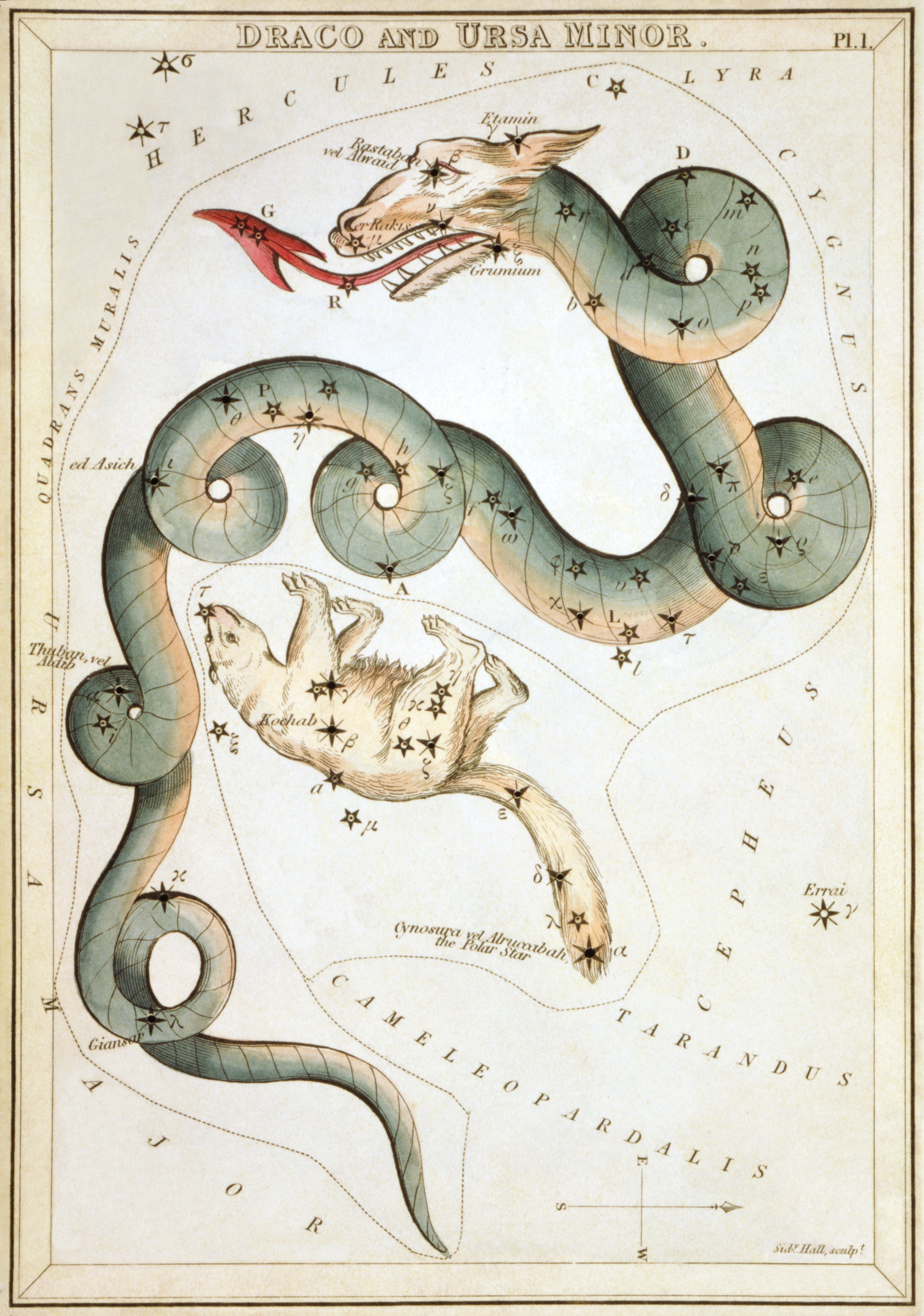|
Delta Ursae Minoris
Delta Ursae Minoris, Latinized from δ Ursae Minoris, formally named Yildun , is a white-hued star in the northern circumpolar constellation of Ursa Minor, forming the second star in the bear's tail. It is visible to the naked eye with an apparent visual magnitude of 4.36. Based upon an annual parallax shift of 18.95 mas as seen from Earth, it is located 172 light years from the Sun. The star is moving closer to the Sun with a radial velocity of about −8 km/s. Description This is an A-type main-sequence star with a stellar classification of A1 Van, where the 'n' indicates "nebulous" absorption lines in the spectrum due to rapid rotation. It is spinning with a projected rotational velocity of 180 km/s, which is giving the star an oblate shape with an equatorial bulge that is an estimated 7% larger than the polar radius. The star is about 327 million years old with 2.35 times the mass of the Sun. It is radiating about 48 times the Sun's luminosi ... [...More Info...] [...Related Items...] OR: [Wikipedia] [Google] [Baidu] |
Ursa Minor
Ursa Minor (Latin: 'Lesser Bear', contrasting with Ursa Major), also known as the Little Bear, is a constellation located in the far northern sky. As with the Great Bear, the tail of the Little Bear may also be seen as the handle of a ladle, hence the North American name, Little Dipper: seven stars with four in its bowl like its partner the Big Dipper. Ursa Minor was one of the 48 constellations listed by the 2nd-century astronomer Ptolemy, and remains one of the 88 modern constellations. Ursa Minor has traditionally been important for navigation, particularly by mariners, because of Polaris being the north pole star. Polaris, the brightest star in the constellation, is a yellow-white supergiant and the brightest Cepheid variable star in the night sky, ranging in apparent magnitude from 1.97 to 2.00. Beta Ursae Minoris, also known as Kochab, is an aging star that has swollen and cooled to become an orange giant with an apparent magnitude of 2.08, only slightly fainter than Po ... [...More Info...] [...Related Items...] OR: [Wikipedia] [Google] [Baidu] |
